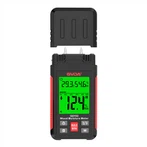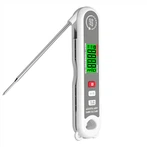How does a multimeter measure electrical leakage?
Before I talk about how to measure electrical leakage with a multimeter, I have to say a premise: using a multimeter to judge whether there is leakage is only suitable for contact leakage or very serious leakage. (For example, the broken skin of the wire touches the shell, or the circuit board touches the shell somewhere.)
For non-contact leakage, such as leakage caused by insufficient insulation strength of wires or insulators, there is no way to measure it with a multimeter. In this case, it is necessary to use a more professional instrument for measuring leakage --- a megohmmeter.
Leakage measurement with multimeter resistance gear First disconnect the power supply, turn the multimeter to the resistance gear (use a large gear as much as possible), then connect one test lead of the multimeter to the wire or device under test, and connect the other test lead to the device shell or the ground wire connected to the shell.
If the multimeter shows that the resistance is zero, it means that the object under test has leakage, and the leakage is serious.
If the multimeter shows infinite resistance, it means that the measured object is normal.
If the multimeter shows a certain resistance, it means that the object under test has leakage, but the leakage may not be very serious.
Multimeter voltage file to measure leakage
We can also judge whether there is leakage by measuring whether the equipment casing is charged. The measurement method is to turn the multimeter to the voltage level, connect one test lead to the equipment shell, and the other test lead to the ground wire (the ground wire must be regular, and the false ground wire is meaningless). If a certain voltage is measured, it means that the device under test has leakage; if the voltage is zero, it means that the device under test is normal.






